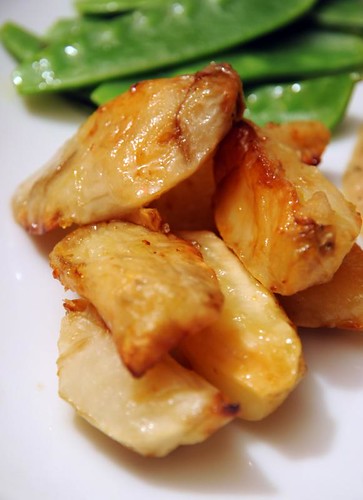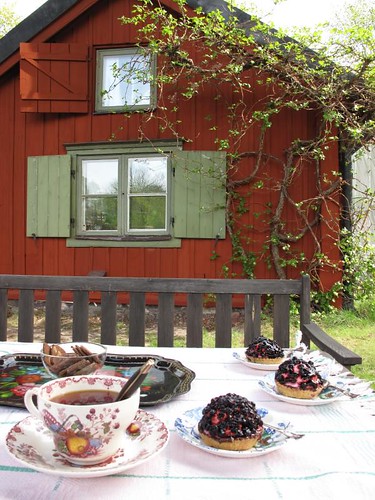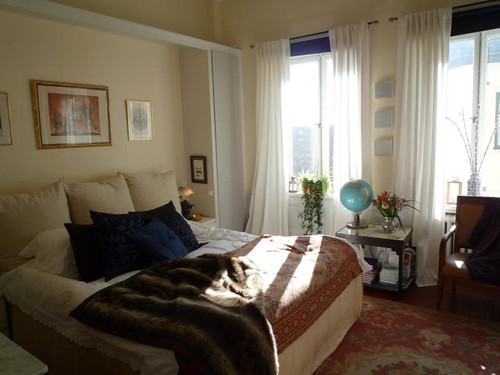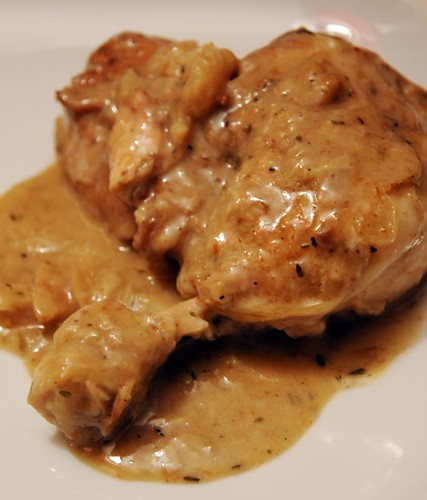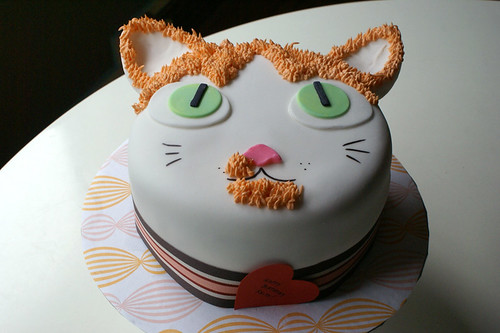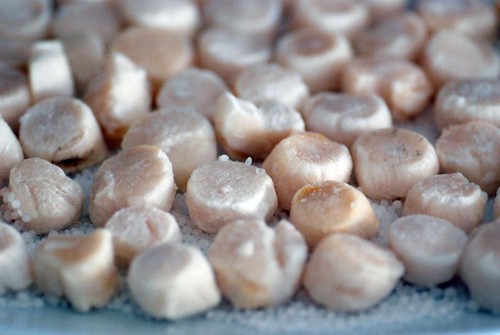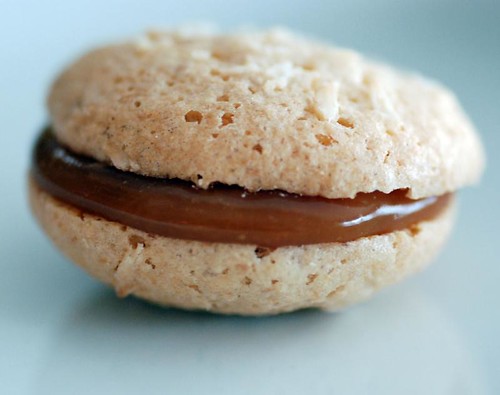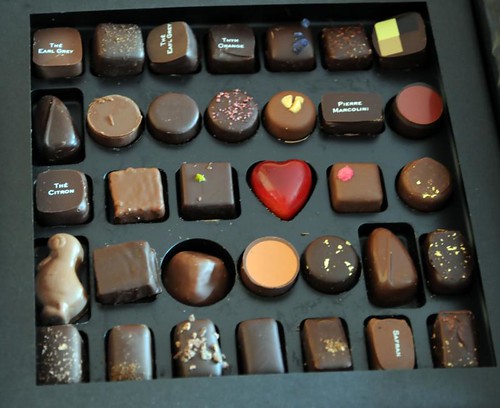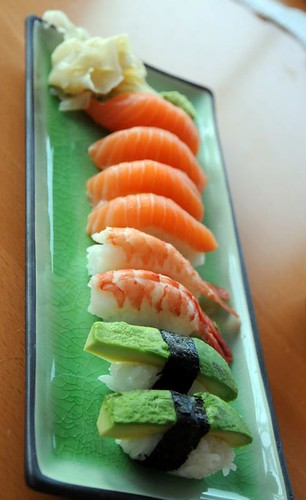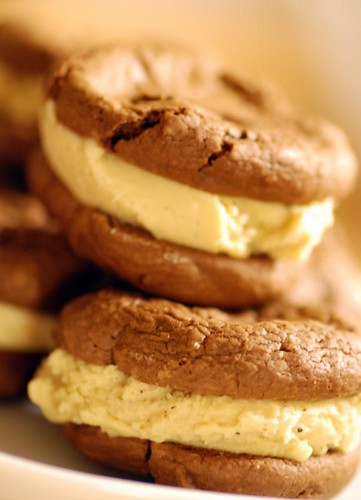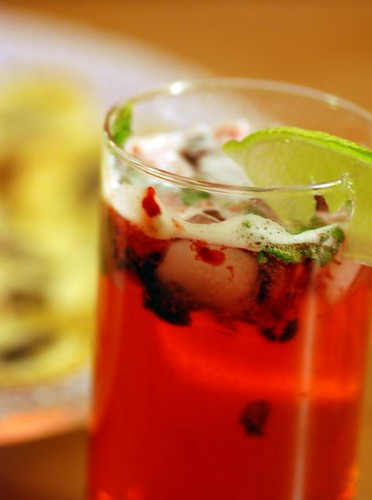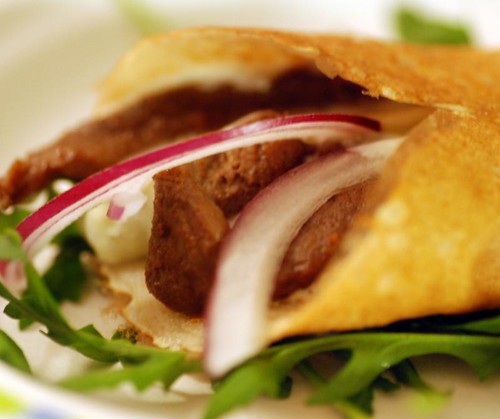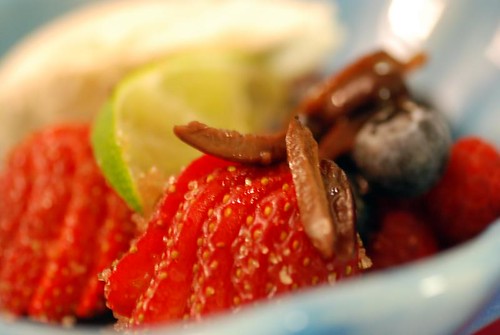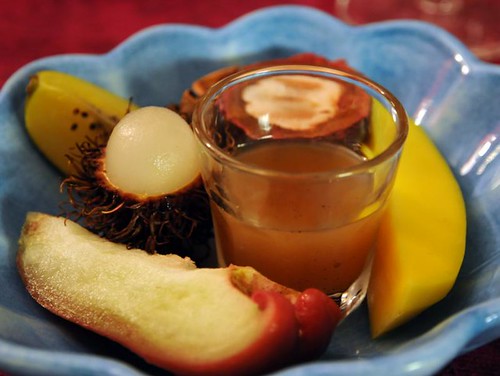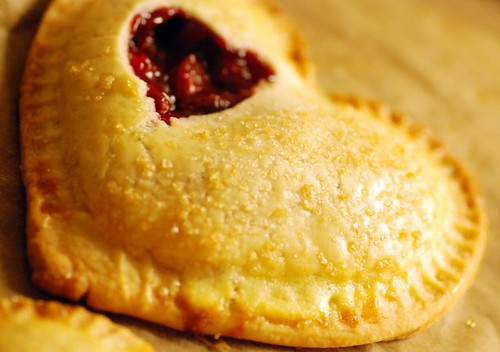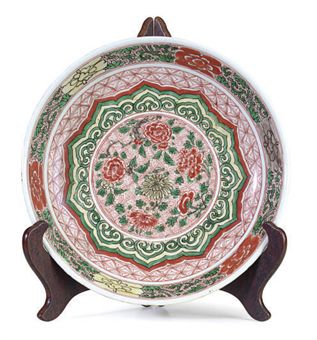

Living in Istanbul, many of the more obvious foreigners I’d known—ruddy faced Brits, in particular—were marks for the small con. Prowling up and down the tourist crammed thoroughfares was always an assortment of well dressed, friendly, slick haired guys, all on vacation from, say, Cypress, all just wanting to know the time, all of whose initial queries led to small talk and an invite to some club they’d heard was good. The club’s prices, not touched on when ordering, always came as a shock to all. The foreigner, feeling sympathy for his newfound friends, would dutifully shell out serious cash and head back to his hostel feeling miffed at how they’d all been fooled.
Now, this never happed to me. Not because I blend in seamlessly to Turkish crowds, so much as I’m generally unfriendly and suspicious to any and all comers. The few times I’ve been in such situations, I’ve realized quickly or declined the offer to get a drink out of a pure, suspicion-free anti-sociality.
Well, my second day’s goal of museum going got sidetracked from the get-go by precisely this sort of business. Interestingly, while past examples of these cons had always come at me in the form of practiced suavité, the Shanghai version came in the form of two rather thread-bare students. Making my way toward the Museum of Chinese Art I was stopped by a brother and sister duo. The brother, Jerry, who did the stopping, asked me where I was from and how I liked the city. Honestly, this didn’t set off any alarm bells. (I’d already been stopped several times in these first few days—on several occasions, people had requested that I pose with them for a picture—so this was nothing new.) However, after ten minutes of chit chat, there was a lull, followed by the suggestion that we go to a tea tasting that was somehow, unclearly, tied to a Chinese minority people’s exposition that was taking place somewhere. They had, you see, been heading there when they met me. Would I like to come along?
Shanghai being a safe place—not the sort of burg were you walk down a back alley and find yourself kidnapped and shipped off to a faraway land—I decided to see where all this led. So we headed off in—though I chose not to point this out—the precise opposite direction from which they had been heading when we first met. After first heading down a main street we turned onto a major backstreet and headed into a shopping mall. This mall was nothing more than a few stores selling plasticy athletic shoe knock offs scattered amid an otherwise desolate environment of empty, dusty, unoccupied lots. We walked up to the third floor, past a nail salon and what appeared to be a pet store to a small office space converted into a pair of private tea rooms. I felt somewhat bad for Jerry and his largely silent sister at seeing the shabbiness of the con. They seemed nice and enough and his English was good enough. They really deserved a better infrastructure to back them up. Once I established that cups of tea were about ten dollars a pop, I politely said my goodbyes and made my way back down, past the empty glass shop fronts and scruffy howling dogs. . .
Yet if we’re speaking of deserving and getting the proper trappings, we must talk of the
Shanghai Museum. The place was a knockout full of exactly the sort of high quality goods you imagine a society churning out over two thousand years of civilization. The imagery failed to pack the sheer hallucinatory punch that I remember feeling at the
National Archeology Museum in Mexico City (There I remember looking at pieces of art and feeling as though I were seeing thoughts utterly alien represented. The stuff there seemed to have to referent in the western art tradition I’d grown up in. The animating minds behind those objects had journeyed down roads I’d never contemplated.) Here, though the motifs were more recognizable, it was the aesthetic experience that stuck.
About two years ago, making my way through
Topkapi Palace Museum, I’d wandered into a room that displayed objects the Ottomans had received via the Silk Road trade. Prominent was a series of the most delicately painted china places, all of the most beautiful blue and white. Looking at those objects, I tried to imagine how the Ottomans must have thought of them, wondering if they sensed the Ming Dynasty to be some powerful force out there beyond their ken of which these perfect little objects was merely a mote in the eye. Did the Ottomans feel there were looking at the tip of an iceberg when they looked at these plates? Well, I when looking at them thought how marvelous a place must be that could produce such things. I thought to myself how fascinating it would be to live in such a place and breath a bit of that tradition.
And the Museum didn’t disappoint on these grounds. It had vast areas devoted to bronzes, jades, coins, and ceramics. These last were my favorite. Arranged chronologically, they moved from the most utilitarian-looking of clay containers to more finely crafted porcelains.
Initially, it was the statues that were most striking. Ducks and other animals, painted in fairly unremarkable shades, during the early Han dynasty (c.200 BC-200 AD) morphed into more odd imaginings—pots shaped like terraced houses packed with small carved figures looking off of balconies and musician figurines with smaller, assistant musicians springing of their chests and shoulders—during the subsequent Wu and Jin periods.
Then, with Tang dynasty (600-900 AD) came large, loving carved figures of
camels and fierce statues of
Buddhist heavenly guardians. These statues were all painted in vibrant, dripping
browns,
greens and
oranges that seemed to fever-dreamishly melt into one another. Of all the earlier art on display these Tang pieces were the most sucessful in their ability to draw you into an utterly separate aesthetic world.
Whether the museum’s collection accurately reflected the culture’s output, I can’t say, but the sculptures definitely dropped off at this point and plates and vases took over. Initially, with the Song dynasty wares, this was not very noteworthy. The Song managed some gorgeous glazes, but that was about the whole of it. Once the Mongols (1100-1200 AD) came onto the scene, however, conquering in this direction and that, things became interesting.
Persian and Islamic geometrical motifs started to appear alongside dragons. Plates started to look more like “
china plates” with the soft white of the plate covered in dark-blue brush work. The Ming (1300-1600 AD) threw some
red into the mix and took to painting women, families and little towns on riversides.
By the time the time the Qing entered the picture around 1600 it was clear that porcelain plates had become big business. The emperors were paying close attention to what was coming out of the kilns, appointing special envoys at the great pottery-works facilities across the empire. Since the early Qing emperors tended to live a long time and exerted such control, the ceramic designs feel as though they can truly be periodized. Each period seems to have produced something more magical than the next. The ones from the Kangxi reign take the motifs of the Ming and
perfect them. Under his son, Yongzhen, there is a great deal more color thrown into the mix as well as an obsession with
peaches and flowers.
The peak comes under Qianlong where each motif—be it
dragons or fruit or
old men carrying water buckets—achieves its perfect expression. Moreover, the
colors and textures of the lacquer rise to new levels; there are imitations of marble, wood, and bamboo. New colors—pastels and subtle combinations of old choices—are introduced as well.
Ceramics aside, the most impressive display was the furniture exhibit full of richly carved sandalwood chairs, cabinets and room dividers. The rooms featuring jade and coins were also exemplary, but coming to them in the forth hour of my five hour tour, the shere abundance was daunting and too much to properly process.
The least impressive rooms were the
painting and
calligraphy galleries. In both cases I can only assume my boredom is largely a result of my unfamiliarity with the techniques involved. The paintings merely seemed a monotonous repetition of birds, trees, mountains, rivers and streams. Each artist’s title card would give his name, period and glaringly obvious specialty (ie. “mountains”). Occasionally an artist would paint something more interesting—demimonde paintings and parties—but no one seemed to have the eye of a Caravaggio or a Velasquez.
Now all this discussion of dinner plates, chairs and so forth might seem a bit boring and over-the-top until you start to consider the effort and skill that went into crafting these things, the lifetime of expertise that was built-up and brought to bear on these objects. To think about the attention that went into such objects is to come closer to the lives of the people who made them. To try and get near that beauty is as close as we can get to that time and that place. That’s why I have trouble with my inability to connect with any of the Chinese paintings. Here are objects that took long thought and skill to produce and I am unable to appreciate it.
This problem is even more unsettling in regards to modern Chinese art. The following day I headed to the
Shanghai Museum of Contemporary Art (MOCA), a pretty little building in the middle of People’s Square, nestled between trees, guarded by two huge, golden,
Koons-
Murakami-style cartoon cat statues.
These cats are a pretty good indication of what’s on display inside. Whereas the first museum was guarded by recreations of palace beast sculptures, whose presence recalled memories of past Chinese accomplishments, these . . .well, these were just cartoons. Hell, inside everything was a cartoon. Currently on display was something called “The Animamix Biennial.”
Now, according to the
New York Times, “Animamix” is a term that describes the current trend in Asian art. It’s “characteristics include the worship of youth and the pursuit of an idealized youthful beauty; strong narrative texts and images; and the use of vivid and colorful visuals derived from electronic media.” In practice this means large numbers of paintings where all the characters are drawn in cartoon form,
characters recur, and everything looks like a Japanese comic book or as though it should be stitched onto the back of a child’s backpack.
The main name one associates with this sort of art is
Takashi Murakami. Not only does his work feature a number of recurring characters and motifs, but Murakami goes the step further by selling his art in forms such as T-shirts and Loius Vuitton handbags. His stock characters tend to be Pokemonesque creatures whose cuteness seems always to be mutating into a fanged nightmarishness. At the Museum his influence could be seen in everything on display.
The MOCA is fairly small I spent around two confounding hours moving through it, trying to get a hold on what these artists were trying to say, trying to feel something in relation to these pieces. It was not a satisfying experience. Picture after picture and installation after installation seemed to be making the same point—namely that life has been turned into a cartoon, edges have been smoothed out, everything has been commercialized and yet, often, burbling beneath the surface of this exists an intense anger.
The best example of the overall aesthetic was a painting on the upper floor of the
Seven Lucky Chinese Gods—each representing attribute, each with his own identifying item (eg a fish). This was a common motif in Chinese art and there had been several such representations at the Shanghai Museum the previous day. Here the Seven Gods were represented as manga-style characters. Now, on the one hand, there is something witty in the notion of adapting traditional motifs into modern settings, thereby questioning the relevance of their message and, equally, the certainties of a modernity that no longer admits them and can only approach such deep ideas through cartoon simulacra, but it doesn’t go beyond witty and I’m not certain it rises to the level of “art.” It seems mere kitsch. The idea is not new and the constant voicing of the same ideas by so many artists reduces its force.
The problem for me wasn’t the sentiment—in fact it’s very satisfying to know that there is a reaction to the crass commercialism that one sees everywhere in Asian media—it was the undifferentiated means of communicating this message. Even if all these artists felt the same fundamental discomfort, it seemed rather pathetic that they possessed such limited techniques for communicating it. (It’s the same reason I dislike an artist like Lichtenstien who seems to have only one idea and one way of expressing it. It’s the same reason that I only listen to the Sex Pistols once a year. It’s the reason I like artists like Bob Dylan who, finding themselves at festivals singing the same protest songs as everyone else and say, fuck it go electric.)
The sheer, tiring sameness of all this art bore down on me and I took to casting glances at other museum goers. I wondered how they felt about this and whether they were taking the same message from all this. Most of the others museum-goers were Chinese couples or groups of friends. Few seemed to be giving the pictures any sustained attention. Most strolled quickly past or took turns snapping photos of one another.
In my experience, modern art is usually intended to cause a reaction, connect you with a sensation, or intentionally avoid doing so in an attempt to criticize our modern world. Most of this art was squarely in the latter category. Whereas those ancient Chinese artists had tried to capture beauty, these artists seemed to be representing anger, despair and the need to present a plasticized front to the world. I glanced over at a nearby woman flashing a peace-sign, posing in front of a painting of a demon bear backgrounded by candy colored swirls and mulled whether she was as oblivious to the message as I was worn down by it. Though she seemed untouched by it, there was another possibility: To acknowledge and to remain indifferent. This last possibility was the more troubling.



